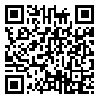BibTeX | RIS | EndNote | Medlars | ProCite | Reference Manager | RefWorks
Send citation to:
URL: http://tumj.tums.ac.ir/article-1-377-en.html
Normal 0 false false false EN-US X-NONE AR-SA MicrosoftInternetExplorer4 Since the recognition of true number of human chromosomes in 1956, many techniques have been developed to detect chromosomal aberrations. A number of those, such as karyotyping and fluorescence in situ hybridization (FISH), are valuable tools in both research and diagnostics. But these techniques have defects that limit their application. One of the important limitations is resolution resolution limitations make it impossible to detect small aberrations. The other major defect is the disability to analyze whole genome. In 1997 Solinas-Toldo introduced a new technique that could cover other techniques' defects. This new technique called microarray-based comparative genomic hybridization (array CGH). Array CGH, with the powerful resolution of FISH and also the ability of whole genome analysis in single experiment accelerated the genetic research. Array CGH has resulted in to a great progress in oncology and genetic disorders research. In addition, this technique has the ability to be used in diagnostics too. This review article, witch include the data of recent published papers and our experiences, gives an overview of the array CGH and compare it with the other molecular cytogenetic techniques. Its application in oncology and genetic disorder is also discussed.
| Rights and permissions | |
 |
This work is licensed under a Creative Commons Attribution-NonCommercial 4.0 International License. |





